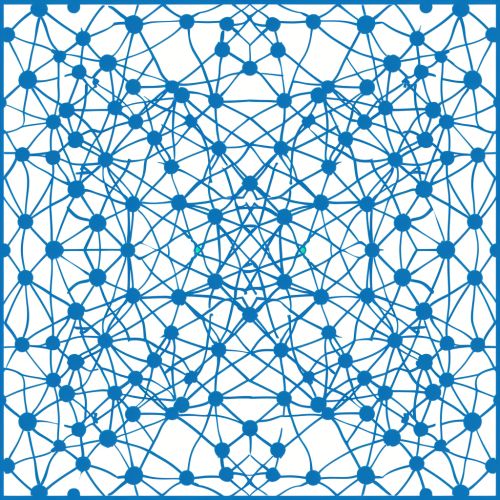Ripley's K-function
Introduction
Ripley's K-function is a statistical tool used in spatial point pattern analysis. It is named after the British statistician Brian Ripley, who introduced it in the 1970s. The function provides a measure of the spatial distribution of points within a given area, allowing for the identification of patterns such as clustering or dispersion. This function has been widely applied in various fields, including ecology, epidemiology, and geology.


Definition and Calculation
The K-function is defined for a spatial point pattern in a region of interest. It is a function of distance, denoted by r, and is given by the following formula:
K(r) = λ^(-1) * E[number of extra points in a circle of radius r around an arbitrary point, given that there is at least one point at the center]
where λ is the intensity (average number of points per unit area) of the point process, E denotes the expected value, and r is the distance from a given point.
The calculation of the K-function involves counting the number of points within a circle of radius r around each point in the pattern, then averaging these counts over all points and dividing by the intensity of the pattern.
Interpretation
The interpretation of the K-function is based on the comparison of its value to that of a Poisson process with the same intensity. If the K-function of the observed pattern is greater than that of the Poisson process for a given distance r, it indicates clustering at that scale. Conversely, if it is less, it indicates dispersion.
The K-function can also be transformed into the L-function, which linearizes the results and makes them easier to interpret. The L-function is defined as:
L(r) = sqrt(K(r)/π)
The interpretation of the L-function is similar to that of the K-function. If L(r) is greater than r, it indicates clustering, while if it is less than r, it indicates dispersion.
Applications
The K-function has been used in a wide range of fields to analyze spatial point patterns. Some of these applications include:
- In ecology, it has been used to analyze the spatial distribution of plants or animals within a given area. - In epidemiology, it has been used to identify clusters of disease cases. - In geology, it has been used to analyze the distribution of mineral deposits or geological features.
Limitations and Extensions
While the K-function is a powerful tool for spatial point pattern analysis, it has some limitations. One of these is edge effects, which occur because points near the edge of the study area have a portion of their surrounding area outside the study area. This can bias the results of the K-function. Various edge correction methods have been proposed to address this issue.
Another limitation is that the K-function assumes stationarity, i.e., that the spatial pattern is the same throughout the study area. If this assumption is violated, the results of the K-function may be misleading.
Extensions of the K-function have been developed to address these and other limitations. These include the pair correlation function, the cross K-function for analyzing bivariate point patterns, and the K-function for marked point processes.
See Also
- Spatial point pattern - Point process - Spatial statistics - Cluster analysis
